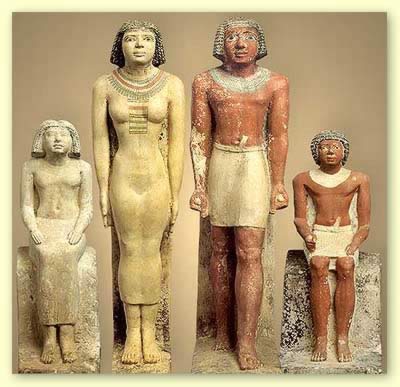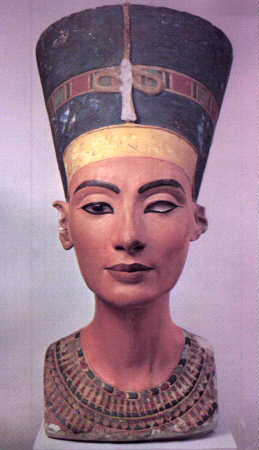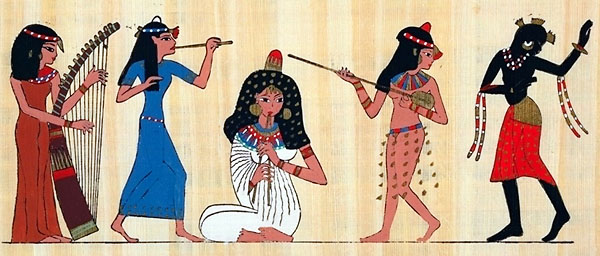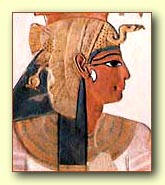Rural and lower-class Egyptians generally believed that women were morally inferior to men. Women were expected to defer to senior male relatives, to avoid contact with men who were not kin, and to veil themselves in public. As children women learned to accept dependency on their fathers and older brothers. After marriage women expected their husbands to make all decisions. Early married life could be a time of extreme subordination and insecurity. The new wife usually lived with or near her husband's family and was expected to help her mother-in-law with household chores. A young wife was under considerable pressure from her husband and his family until she bore a son. Barrenness was a woman's worst possible misfortune, and not giving birth to a son was almost as bad. Women who had only daughters were derogatorily called "mothers of brides." Most families continued having children until they had at least two sons. As the length of a woman's marriage increased, and her sons matured, her position in the family grew more secure. A woman was at the peak of her power when her sons were married because she could then exercise influence over her sons' children and wives. Patrilineal families valued honor (ird). The sexual behavior and reputation of the women of a lineage were the most important components of a family's honor. A bad reputation for one woman meant a bad reputation for the whole lineage. Honor was essential to social life; without it even a minimal social standing in the community was impossible. Men were especially interested in maintaining honor. Women were always on their best behavior around men from other families because they were afraid of getting a bad reputation. A bad reputation could disgrace the men of her family. A disgraced husband could restore his status, however, through divorce. Most disgraced fathers and brothers in rural and lower-class urban families, however, believed that honor could only be restored by killing the daughter or sister suspected of sexual misconduct. Family members who murdered the women were prepared to accept legal penalties for their actions. Women have traditionally been preoccupied with household tasks and child rearing and have rarely had opportunities for contact with men outside the family. But since the 1952 Revolution, social changes, especially in education, have caused many women to spend time in public places among men who were not related to them. To limit woman's contact with these men, practices such as veiling and gender segregation at schools, work, and recreation have become commonplace. Furthermore, lower class families, especially in Upper Egypt, have tended to withdraw girls from school as they reached puberty to minimize their interaction with men. Lower-class men frequently preferred marriage to women who had been secluded rather than to those who had worked or attended secondary school. Egypt's laws pertaining to marriage and divorce favored the social position of men. Muslim husbands were traditionally allowed to have up to four wives at a time in accordance with Islamic religious custom, but a woman could have only one husband at a time. A Muslim man could divorce his wife with ease by saying "I divorce thee" on three separate occasions in the presence of witnesses. A woman wishing to dissolve a marriage had to instigate legal proceedings and prove to a court that her husband had failed to support her or that his behavior was having a harmful moral effect on the family. The laws required men to support their ex-wives for only one year after a divorce, and the fathers gained custody of the children. A man faced few or no penalties if he refused to provide equal support to his wives or if he refused to pay alimony to his divorced wife. Divorce was much more difficult for Copts than it was for Muslims. Common law regulated the marriages and divorces of Copts. |
   WOMENIN RELIGION     |
After decades of debate, the government amended the laws relating to personal status in 1979. The amendments, which became known as the "woman's rights law," were in the form of a presidential decree and subsequently approved by the People's Assembly. The leading orthodox Islamic clergy endorsed these amendments, but Islamist groups opposed them as state infringements of religious precepts and campaigned for their repeal. The amendments stated that polygyny was legally harmful to a first wife and entitled her to sue for divorce within a year after learning of her husband's second marriage. The amendments also entitled the first wife to compensation. A husband retained the right to divorce his wife without recourse to the courts, but he was required to file for his divorce before witnesses at a registrar's office and officially and immediately to inform his wife. The divorced wife was entitled to alimony equivalent to one year's maintenance in addition to compensation equivalent to two years' maintenance; a court could increase these amounts under extenuating circumstances such as the dissolution of a long marriage. The divorced wife automatically retained custody of sons under the age of ten and daughters under twelve; courts could extend the mother's custody of minors until their eighteenth birthdays. In 1985 Egyptian authorities ruled that the amendments of 1979 were unconstitutional because they had been enacted through a presidential decree while the People's Assembly was not in session. A new law reversed many of the rights accorded to women in 1979 (see The Limits of Incorporation: The Rise of Political Islam and the Continuing Role of Repression). A woman lost her automatic right to divorce her husband if he married a second wife. She could still petition a court to consider her case, but a judge would grant a divorce only if it were in the interests of the family. If a divorce were granted, the judge would also determine what was an appropriate residence for the divorced woman and her children. The changes in divorce legislation in 1979 and 1985 did not significantly alter the divorce rate, which has been relatively high since the early 1950s. About one in five marriages ended in divorce in the 1980s. Remarriage was common, and most divorced men and women expected to wed again. Seven out of ten divorces took place within the first five years of marriage, and one out of three in the first year. The divorce rate depended on residence and level of education. The highest divorce rates were among the urban lower class, the lowest rates among the villagers of Upper Egypt. Throughout the country, as much as 95 percent of all divorces occurred among couples who were illiterate. |